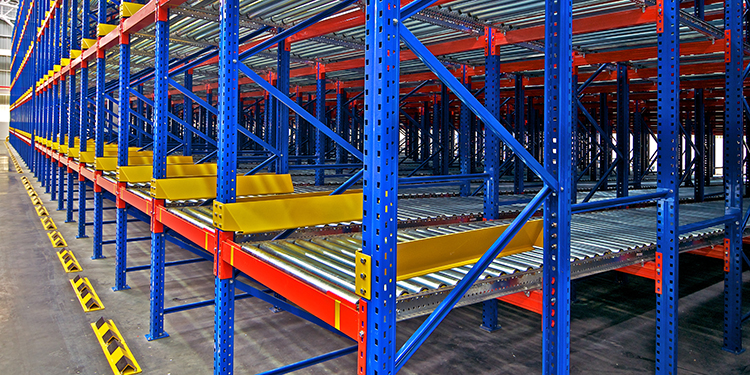The “Dos and Don’ts” Of Pallet Flow Rack

Whether you own a pallet flow rack system (also referred to as “gravity flow” rack), or are considering investing in one, ownership comes with a variety of responsibilities. These include ensuring that the structure complies with applicable standards and is properly maintained for the safety of personnel working in and around it. In addition to publishing the American National Standards ANSI MH16.1 for Industrial Pallet Rack — which details rack design, engineering, construction, and ownership requirements — the members of RMI have also assembled a list of pallet flow rack owner “Dos and Don’ts.” Following these recommendations will enhance both the integrity and reliability of the system, while reducing the risk of injury for workers as they perform their tasks in and around the racking.
Pallet Flow Rack Owner Dos…
- Do use flow rack to store multiple pallets of the same product, particularly fast movers.
- Do install load plaques and post system design parameters in multiple, conspicuous locations.
- Do make sure the original Load Application and Rack Configuration (LARC) drawings are kept current; update the LARC drawings if modifications are made to the system.
- Do train all personnel to immediately report any visible rack damage, out-of-plumb condition, or stuck pallets they observe in the system.
- Do advise employees working at the pick face of a lane of pallet flow that a significant amount of force rests on the front pallet because the loads travel atop gravity wheels (or rollers) down an incline.
- Do train forklift drivers to safely load pallets from the back of the lane opening following these best practice guidelines:
-
- Position the vehicle squarely to the opening of the lane for safe, proper placement of the load into the system.
- Make sure the load’s center pallet stringer is aligned with the center of the flow lane to prevent angled positioning of the load, which could result in a jam.
- Once the vehicle is in the proper position, raise the load 2-3 inches above the lane rollers, then tilt it forward to allow the pallet to make contact with the rollers or wheels.
- Upon placement, the load will roll away from the vehicle and down the lane until it is stopped by the preceding pallet load.
- After placement is complete, the forklift should back away from the opening completely prior to turning to avoid an impact with the uprights.
- Do train forklift drivers to follow these best practice guidelines for the safe removal of a pallet load from the discharge/pick face end of a lane.
- Align the forklift square to the rack face before entering the pallet’s fork openings.
- Once the pallet is on the forks, lift it to a level position high enough to clear the front beam, yet still low enough to maintain contact with the loaded pallet behind it.
- Before extracting the pallet, the gently push it back against the next pallet load to help initiate forward flow of the rest of the lane.
- Do use a technique known as “plugging” to clear a jammed lane, wherein the forklift lifts the front pallet up by 1-inch, then uses it to push the subsequent load back by 3 to 4 inches to initiate flow.
- Do require supervisors to conduct periodic rack inspections for damage.
- Do inspect all pallets used in the racking.
- Do review rack damage logs to plan and schedule rack repair.
Pallet Flow Rack Owner Don’ts…
- Don’t permit forklift drivers to allow the fork tips to touch pallet flow lane wheels or rollers when placing a load into the system, as this could cause a jam.
- Don’t place pallets with broken or missing bottom boards into a pallet flow system, as the damaged pallet is likely to cause a jam within the lane.
- Don’t permit operators to climb into a live pallet flow system to attempt to clear a jam or stuck pallet, as there is a high risk of serious injury.
- Don’t reconfigure racking without proper authorization from the original equipment manufacturer (OEM).
- Don’t ignore damage to the racking.
- Don’t ignore warning signs of structural failure, such as excessive beam deflection.
- Don’t put off rack repair.
Want more guidelines for the safe use of storage racks? Purchase RMI’s publications “Considerations for the Planning and Use of Industrial Steel Storage Racks” and “Guideline for the Assessment and Repair or Replacement of Damaged Rack.”


